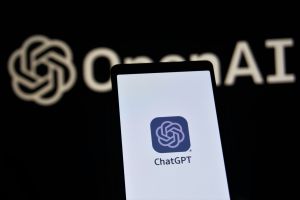The AI revolution is here. AI, or Artificial Intelligence, is more accessible than ever before. What was once the sole dominion of scientists and supercomputers can now be accessed via a personal computer or even a cell phone. This newfound accessibility creates a lot of options for teachers and students. While most of the public discourse has centered on the possibility of cheating, AI could make the job of teachers significantly easier if used properly.
“AI could make the job of teachers significantly easier if used properly.”
Below, you will find AI strategies for teachers. These strategies are specific to the Artificial Intelligence platform ChatGPT. When you log on to ChatGPT, you will be greeted by an interface that allows you to type in prompts:
Create your deliverables
One of the most time-consuming activities for a teacher is finding or creating deliverables. ChatGPT can probably accomplish that task much faster. Typing in a prompt like “Create an article on the Water Cycle” will instantly give you a reading that you can, with little to no edits, put in front of students. From there, you can create your own questions if you like, or you can enter a follow-up prompt along the lines of “Create 4 comprehension questions.” Just like that, you have instantly created a reading with questions. No textbook or online searching.
This works for math too. “Create 20 algebra problems” or “create an algebra word problem based on the NBA”’ are useful examples of ChatGPT’s math creation potential.
Here’s a quick video where I show you this in action: https://www.youtube.com/watch?v=Q_jo-6t0R2g
Grade and create rubrics

Instantly creating 20 math problems is great, but the traditional advantage of using a textbook is the answers are in the back of the book. Well, with ChatGPT, after you create the math problems, you can have it answer them as well. And perhaps most helpful to teachers is that, unlike a calculator, ChatGPT will show its work. Simply copy and paste the problems you want answered and type in “answer these problems and show the work.”
This neat trick works with those readings you created as well. When you create the reading comprehension questions, simply type in “answer these questions using the reading.” A useful feature for creating exemplars.
Watch as I demonstrate: https://www.youtube.com/watch?v=RONaYzp3KQk&t=2s
Differentiate materials
Creating readings is great, but almost every classroom has a wide range of students, and all of those students are generally on different levels. ChatGPT has the ability to create readings on about the same subject on different reading levels. For example, say you are teaching a lesson on the Mayflower for 6th graders. You may have a student in 6th grade reading on an 8th grade level. If you want them to be challenged, simply type in “create a reading on the Mayflower at an 8th grade level.” ChatGPT will give you an article written at a level appropriate for the average 8th grader. In that same class, you may have a student who only reads at a 4th grade level. A prompt of “create a reading on the Mayflower at a 4th grade level” will give you something more appropriate for them… but on the same subject. Creating differentiated readings on the same topic is something that would take a human a long time. Notably, services charge a lot of money for it. ChatGPT does it for free.
Allow me to show you what ChatGPT generated for me: https://www.youtube.com/watch?v=LeooAhI8Jsw
Plan a whole lesson
Creating deliverables is one thing, but materials are most useful in the context of a lesson. ChatGPT can take care of that for you as well. When you have your topic in mind, you can type in something like “create a lesson on the Silk Road for 6th graders for a 50-minute class.” ChatGPT will provide you with a rough plan idea for that lesson. This feature is not as usable out of the box. You will probably have to make tweaks to make it work for your actual class, but it is very useful to start from.
Here is where I show you how I’ve used this functionality for my lesson planning: https://www.youtube.com/watch?v=7nLOriYuqL8
Plan a whole year
ChatGPT is great for planning daily tasks and deliverables, but it can plan your whole year with a few parameters. For example, almost every single content area is going to have standards. If you copy and paste these standards into ChatGPT, it can sort them into useful categories. After that, it can determine the best order to teach those standards and create units complete with essential questions and summative assessments. This is definitely one trick that you will have to play with; however, it is possibly the one that will save you the most time.
Let’s see ChatGPT at work: https://www.youtube.com/watch?v=S15TKKuTV88
Experimentation
ChatGPT is what you call general artificial intelligence. This means it doesn’t have a specific purpose or set of things it can do. Experimenting is your friend. This is not an exhaustive list of ways ChatGPT can help an educator in the classroom. In theory, ChatGPT should be able to do many of the intellectual tasks that a teacher could do just much faster.
Like AI as a whole, ChatGPT is not perfect. It makes mistakes. You never want to use output from ChatGPT, or other AI sources, in front of students without looking at it first. However, ChatGPT can make quick work of the things teachers hate doing.
Resources
Please login or register to claim PGPs.
Alternatively, you may use the PGP Request Form if you prefer to not register an account.



